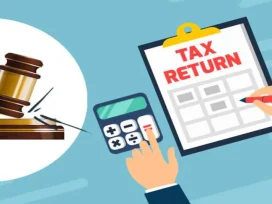
How to Create a Tax Workpaper Checklist to Avoid Penalties
In the world of tax compliance, all-encompassing documentation is not just best practice—it’s essential. Tax workpapers present an image of the groundwork for accurate filing, audit readiness, and supervisory compliance. Without a correctly organized and complete set of workpapers, trades and tax professionals risk mistakes, misplaced deductions, and even penalties from tax experts.
Creating a tax workpaper checklist helps guarantee that no essential document or step is overlooked. In this article, we’ll guide you through how to build an active checklist that raises accuracy and helps avoid expensive penalties.
What Is a Tax Workpaper Checklist?
A tax workpaper record is an orderly list of necessary documents, computations, and support materials used to prepare a tax return. It acts as a plan to verify that each return is situated with adequate proof, guaranteeing fullness and accuracy.
Why You Need a Checklist
Having an organized checklist of tax workpapers offers various benefits:
- Ensures compliance accompanying IRS, CRA, or other tax expert requirements
- Minimizes mistakes and missed deductions
- Increases adeptness and regularity across your team
- Enhances audit readiness
- Provides a clear documentation trail to protect positions if challenged
In short, a good record protects both the preparer and the customer.
Steps to Create a Tax Workpaper Checklist
1. Categorize by Taxpayer Type
Start by recognizing whether the return is for:
- Individual (1040)
- Corporation (1120, T2)
- Partnership (1065)
- Nonprofit (990)
- Other systems
Each type will require various documentation, so adjusting the checklist is key.
2. List Core Documents Required
Include all essential forms and backup documentation. For example:
For Individuals:
- W-2s, 1099s, K-1s
- Interest and profit gains
- Mortgage interest (Form 1098)
- Medical expenses, lenient donations
- Tax fees or refunds from prior period
For Businesses:
- Trial balance and general ledger
- Bank statements and reconciliations
- Depreciation schedules
- Payroll reports
- Sales and payment proceeds
3. Include Calculations and Reconciliations
Each major region should involve:
- Reconciliations (e.g., bank to books, cost to returns)
- Tax adjustments
- Supporting estimations for deductions or credits
- Notes defining any different items or judgments
4. Incorporate Review and Sign-off Steps
Ensure quality control by adding checkpoints for:
- Internal preparer review
- Manager or spouse sign-off
- Client proof of provided info
- Final review before e-filing
5. Use a Digital Template
To streamline the process and decrease human error:
- Use tax software with included checklist functionality
- Create a reusable Excel or PDF form
- Include due dates and accountable crew members
- Set up automatic reminders for absent items
Conclusion
A direct tax workpaper checklist is also an excitement list—it’s a compliance safeguard. By altering your checklist to customer types, including all upholding documents, and maintaining a clear review process, you mitigate the risk of mistakes and penalties.
In a field where exactness is everything, a well-planned checklist is individual of your most valuable forms.







